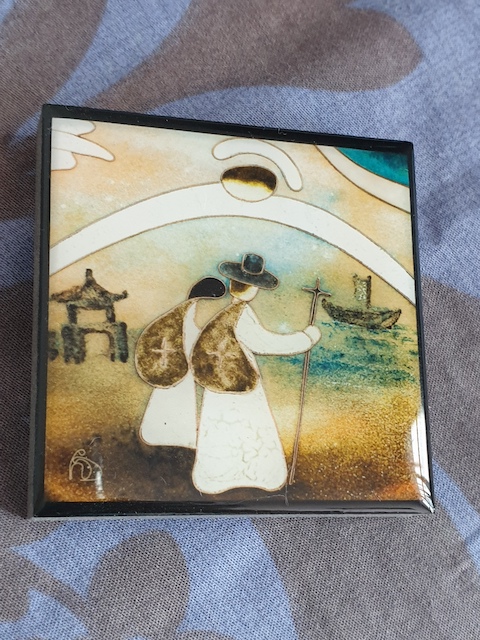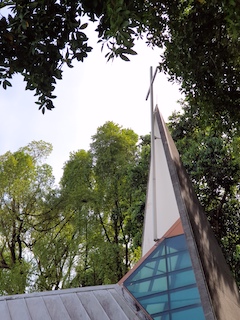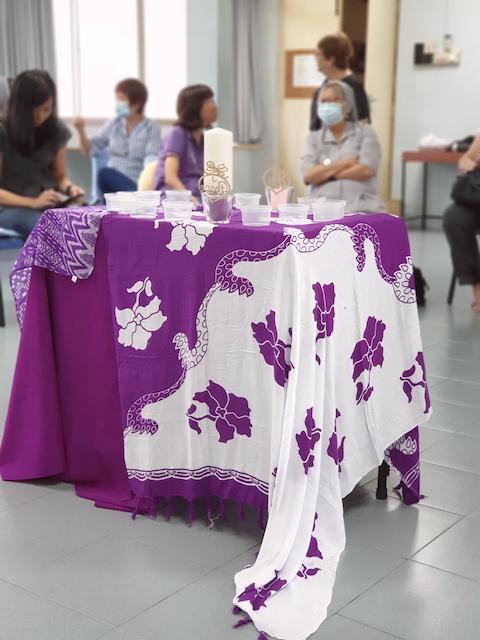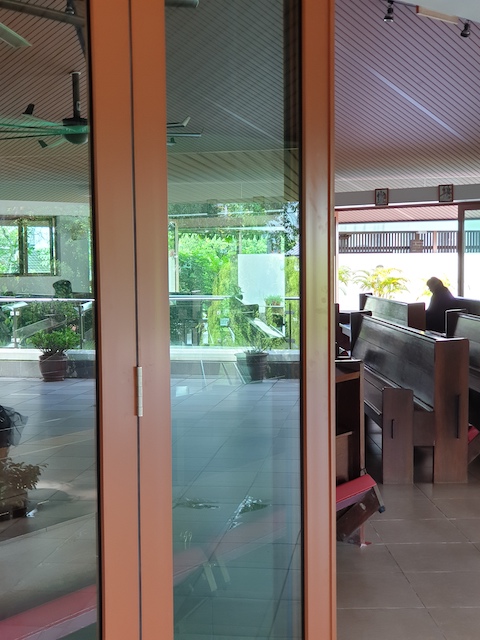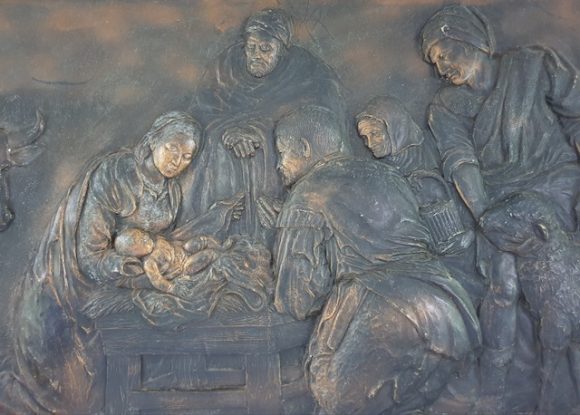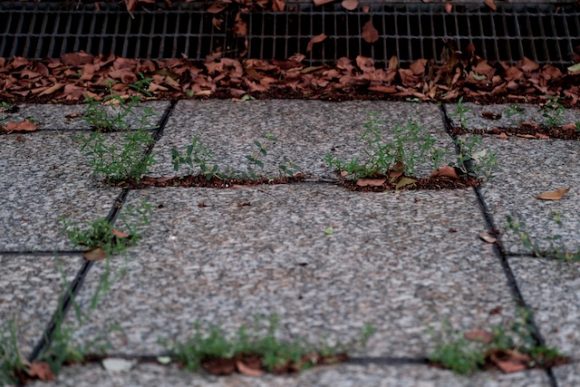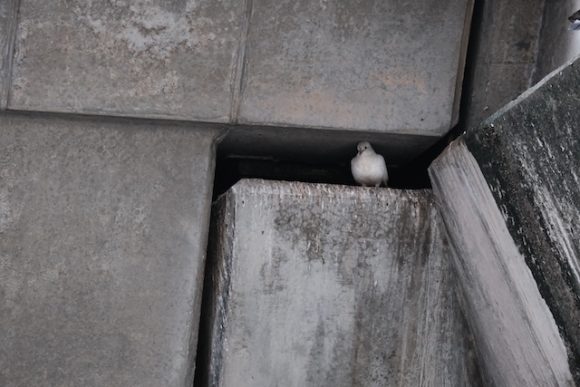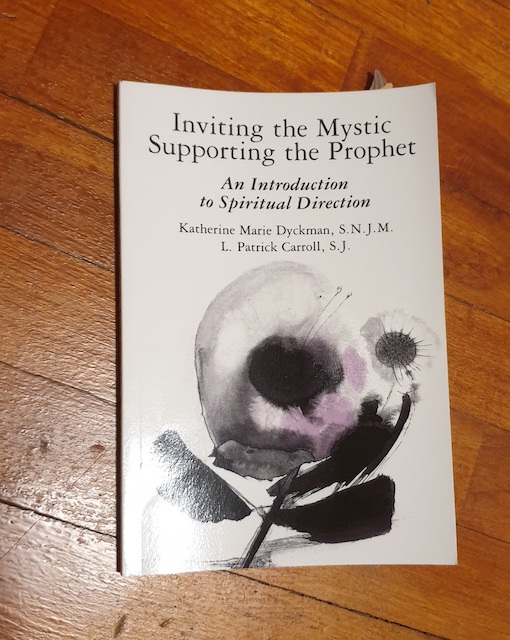This beautiful image with a magnet for the refrigerator was given by Teresa Hogan, a friend from the faith sharing group I am in. She bought it from the famous Myeongdong Cathedral in Seoul, Korea. When I beheld the 4cm square print of a painting (see above), it straightaway struck me as a beautiful image of what spiritual direction is all about.
Spiritual direction is about accompanying someone on a journey. Although the picture is actually one of a couple on a journey, it can be anyone. I liked the idea of the spiritual director carrying a staff with a cross at the top, a symbol of our dependence on Christ’s finished work during our spiritual journey. The small sail boat at the harbour reminds us that the journey we take away from the safety of home, may be marked by strong winds and massive waves at some point, and having a companion on this journey of life is vital. Most blessed of all is to have the nurturing and caring Spirit watching with love over our going out and coming in (Psalm 121) and this is pictured in the white overarching cloud in the picture.
I decided not to stick this to the fridge. I will keep it and place it at my desk to remind me what this ministry is all about. But what exactly is Spiritual Direction? Let me give you some of the descriptions that was given to us during one of the lessons in the Spiritual Direction Formation Program I am attending.
“An interpersonal relationship in which one person assists others to reflect on their own experience in the light of what they are called to become in fidelity to the Gospel” (Carroll & Dyckman).
“Spiritual direction, as we understand it then, is directly concerned with a person’s actual experiences of his relationship with God …. religious experience is to spiritual direction what foodstuff is to cooking. Without religious experience there can be no spiritual direction.
We define spiritual direction, then, as help given by one Christian to another which enables that person to pay attention to God’s personal communication to him or her, to respond to this personally communicating God, to grow in intimacy with this God, and to live out the consequences of the relationship. The focus of this type of spiritual direction is on experience, not ideas, and specifically on religious experience, that is, any experience of the mysterious Other whom we call God. Moreover this experience is viewed, not as an isolated event, but as an expression of the ongoing personal relationship God has established with each one of us”. (Barry & Connolly S.J.)
A spiritual director made this observation in one supervisory session: ‘Spiritual direction is like panning for gold. A directee comes and together we dip into the stream of their life and pull up all kinds of things. Rocks of all sizes – I can never guess what is coming next – all kinds of conflicts and problems, then all of a sudden some fleck or nugget of pure gold emerges into view in the bottom of the pan as we swirl the water around, emptying out the rocks.’ This is a powerful and captivating metaphor of the process of spiritual direction. Together, the director and directee look at everything – whatever is in the water and the pan – during their session. The director receives the directee’s life and everything in that life, helping the directee contemplate the gold among all the conflicts and block and stuck places. A skillful, graced director gives that gold reverence, time, interest, and attention until the directee realizes how much more valuable and significant are the flecks of gold – the experiences of grace and the Spirit – then are all the stuck or problematic areas of his or her life.” (Ruffing RSM)
“Spiritual direction seeks primarily to enable the seeker to achieve a deep relationship or grounding in God and thus to live a life of total freedom, individuality and deep love. This is an awesome and complex process which entails ridding oneself of past psychological injuries and traumas, false ways of thinking and acting, and undue attachment to any person, possession, or spiritual practice. At the same time it encourages and fosters a practice of deep prayer so that one can discover ones’ deepest self, and thereby find the will of God in one’s life.” (Alice McDowell)
If you are looking for spiritual direction, Life Direction Singapore , an ecumenical group that has a list of available trained spiritual directors of Catholic or Protestant backgrounds.
